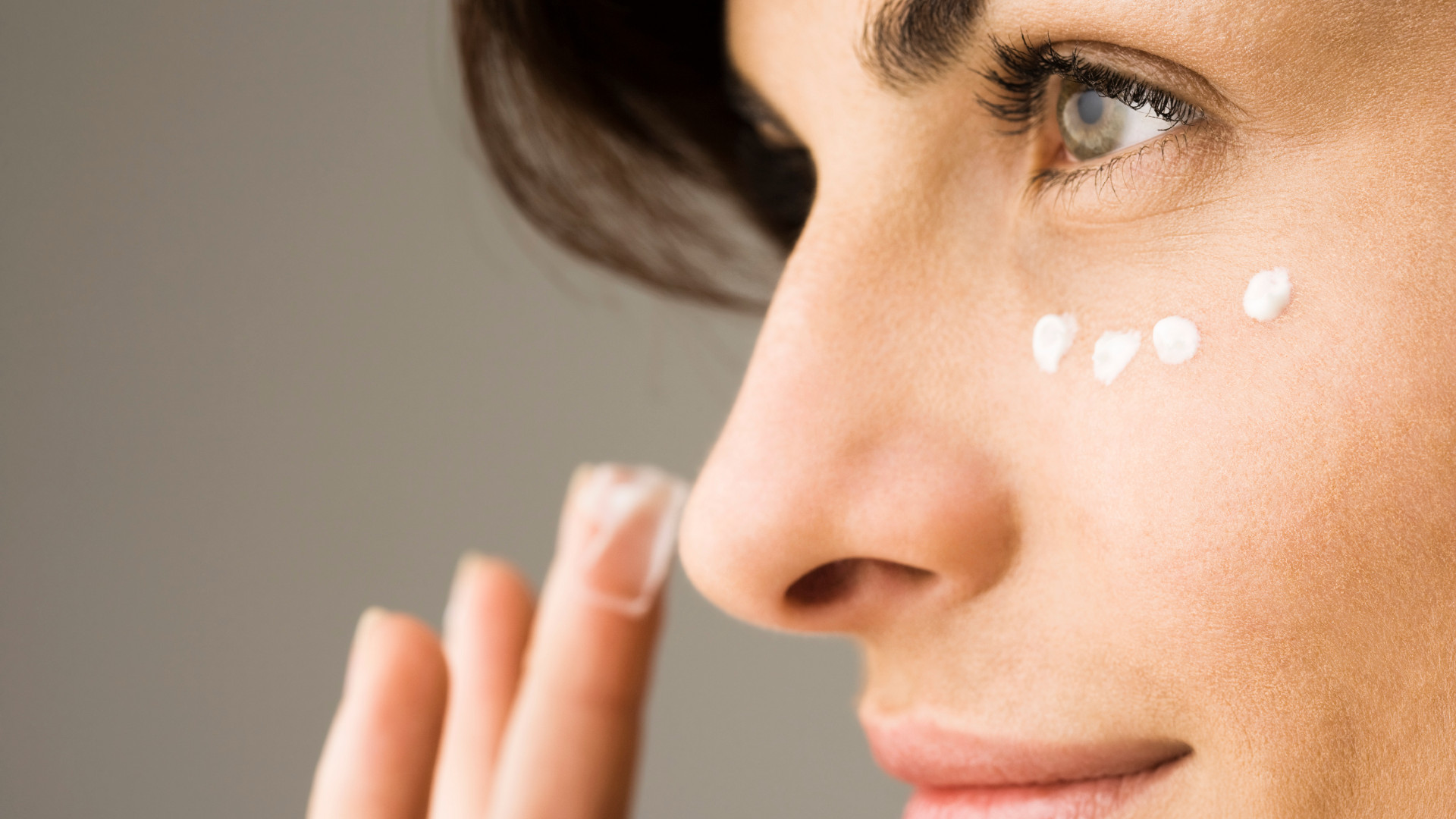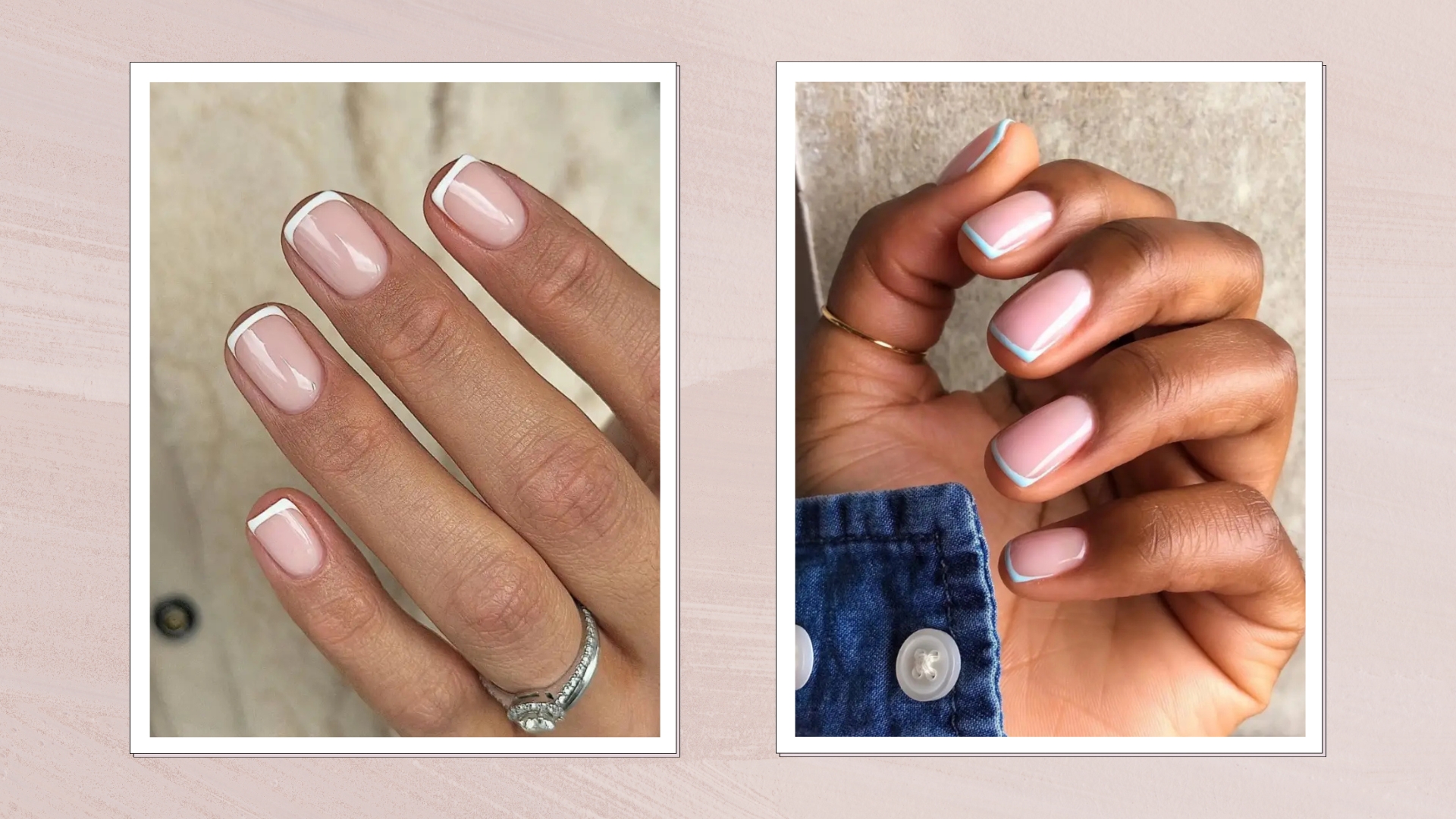How to get rid of eye bags
Learn how to get rid of eye bags: treatments, products and simple lifestyle switches


Along with dark circles, eye bags are considered one of the trickiest skin concerns to address. This is largely due to the fact that they can be caused by so many factors. Genetics, diet, fluid retention, lack of sleep and skin losing its elasticity over time, are just a handful of the wide-ranging reasons for the appearance of bags under the eyes. You might have the best eye cream on the market, but it might be more than a skincare product alone can solve.
While we shouldn’t feel pressure to get rid of them – eye bags are simply a natural part of the ageing process – for some people, they can feel uncomfortable. If that’s you, there are options available to help.
As we’ve mentioned, the type of long-term results that you’re looking for require more than the daily application of your favourite eye cream. Product needs backup, and that’s where a well-rounded holistic approach comes in. This can range from lifestyle and nutritional modifications to more specific product selection and, for more complex cases, tailored in-clinic treatments.
Each of these elements can play a role but, as it can be a little overwhelming to know where to start, we asked the experts for their professional recommendations, across a variety of individual needs and budgets.
Identify any underlying health problems
Issues such as thyroid and kidney issues can cause eye bags to be more pronounced in certain people, says aesthetic and reconstructive oculoplastic surgeon, Dr Sabrina Shah-Desai. In order to rule these out, it’s a good idea to schedule an appointment with your GP.
Allergies could also be a factor; not only could they be causing fluid to pool around your eyes, but any puffiness can be further exacerbated by excessively rubbing itchy (but sensitive) skin. Again, it’s worth seeing your doctor to find out more, and to uncover the best strategy for tackling them – it may be as simple as taking antihistamines.
Review your sleep routine
Sleep deprivation is the main cause of eye bags seen by holistic therapist, facialist and founder of re:lax Skin Studio, Katie White. This trigger is also one of the hardest to tackle; it’s been reported that as many as 16 million adults suffer from sleepless nights in the UK, with work stress and money worries keeping many of us up at night.
Sign up for the woman&home newsletter
Sign up to our free daily email for the latest royal and entertainment news, interesting opinion, expert advice on styling and beauty trends, and no-nonsense guides to the health and wellness questions you want answered.
That said, making a few small tweaks to your nighttime routine can make a world of difference. “Implement a good sleep hygiene practice, such as dim lighting and a cool temperature in the bedroom,” recommends Katie. “Avoid any stimulants before bed, such as caffeine or alcohol, and instead of reaching for your phone, pick up a book or opt for a sleep meditation and/ or a self-massage.” Physical touch increases levels of serotonin (the ‘happy hormone’), which in turn can help you feel less anxious.
Getting ready for bed doesn’t necessarily mean waiting until it gets dark either. While you don’t need to hop into your pyjamas at 3pm, you can slow down your pace by creating little pockets of serenity during the day. Incorporating a meditation or mindfulness practice into your morning routine, using apps such as Calm and Headspace, can be particularly effective. It’s also smart to switch to decaffeinated drinks after midday.
Get moving
A build-up of lymph, the fluid that contains and transports white blood cells, could also cause eye bags. “The primary function of the body’s lymphatic system is to transport lymph around the body to help eradicate toxins, waste and other unwanted materials,” explains Katie. “It’s one of our main detoxification systems and an integral part of our immune system, helping us fight infection and disease.”
The lymphatic system relies on the movement of muscles to transport lymph around the body, so leading a more sedentary lifestyle can lead to the ‘pooling’ of fluid in certain areas – including around the eyes.
The good news? Any movement – even a short power walk – can be helpful for preventing this. Regularity is key.
Try a lymphatic drainage massage
For more targeted puffy eyes reduction, incorporate a lymphatic drainage massage into your skincare routine. Katie recommends the following to promote microcirculation, as well as collagen and elastin production, which can tighten the skin:
- “Apply an oil or a cream before doing any massage to avoid dragging the skin.”
- “Use your ring finger under the eyes, moving in gentle semi-circles across the orbit (bones that form the eye socket) from the inside to the outside of the eye.”
- “Starting from the side of the nose and under the eyes, work outwards pressing and holding but not losing contact with the skin.”
- “Using your thumb and third finger, do very gentle pecks and pinches all around the eye. Repeat for a minute or two every morning and evening when applying products.”
Refrigerate your de-puffing products
In the same way that applying ice to an injury decreases swelling, popping your eye cream or gel into the fridge can further enhance its effect on puffy eyes.
The same goes for a jade roller, which is a perfect tool for those who prefer a less hands-on approach to lymphatic drainage. Not only does it feel blissful but, provided that you don’t press too hard, it offers smooth and consistent pressure that instantly wakes up tired skin.

Avoid heavy eye creams
When it comes to picking an eye cream, texture is key. Avoid heavy ones (especially at night), and instead choose light or gel formulations for a fresher feel. “Your skin can only absorb so much,” points out Katie. “After absorption, the product that's left on top of the skin can overload the delicate tissue around the eye area and cause puffiness.”
If your eyes are particularly prone to puffiness, she recommends forgoing eye products in the evening altogether. “Try a light facial oil that contains anti-inflammatory ingredients instead.” Oilixia is one of her favourite brands for this.
Try a caffeine eye cream
If you prefer the targeted formulation of an eye-specific treatment, there are certain ingredients that are especially effective at deflating and decongesting. “Caffeine-based topical eye creams are great at ‘de-puffing’ the eyes,” says Dr Shah-Desai.
They work by constricting the blood vessels underneath the skin, which in turn reduces swelling. Skin Better is one of her go-to brands in this regard. For a less expensive option, we recommend seeking out The Inkey List Caffeine Eye Cream or The Ordinary Caffeine Solution 5% + EGCG.
Reduce your salt, alcohol and caffeine intake, and drink more water
When it comes to eye bags, well any skin concern really, what we put into our body is often more important than what we put on it. “Diet is crucial,” says Katie. “Reduce your salt and caffeine intake and ensure that you are staying hydrated by drinking water and eating water-rich foods.” These two culprits (as well as excess alcohol) in particular can lead to water retention, including around the eye area.
Ensure that you’re drinking your daily quota of H2O in order to flush out toxins and excess fluid, as, interestingly, dehydration actually amplifies water retention. If glugging water by the glass gets a little boring after a while, Katie recommends swapping in teas such as nettle and dandelion, both of which help support the liver.
Try an in-clinic treatment
If, after trying the suggestions above, your eye bags are still proving hard to shift, it might be worth considering professional treatments that could help. Take time to consider if this option is right for you – you’ll want to consider budget, the prominence of your eye bags, expectations and downtime – before plumping for any of the three following procedures.
Tear-trough fillers
“This is great if the eye bag is small and there is a hollow under the eye,” explains Dr Shah-Desai. It involves injecting filler into the area between the cheek and lower eyelid to tighten the eye contour, restoring volume that naturally decreases as we age. The procedure takes 15 minutes (with minimal downtime) and results last between six and 18 months. Tear-trough filler prices start from £450.
Radio-frequency microneedling
Recommended by Dr Shah-Desai for mild eye bags paired with skin that is loose and wrinkled, this treatment works by promoting collagen production in the skin. After a course of two to three treatments, four weeks apart, results can last up to two years. Eyelids can swell after treatment, although they should settle 48 - 72 hours later. Radio frequency microneedling priced at £600 per session (for the full face and lower eyelids).
Lower-lid blepharoplasty surgery
For more prominent eye bags, Dr Shah-Desai suggests this option. While it’s the most invasive of her recommendations, it also offers the longest-lasting results – up to 10 years – because it removes the fat that can give rise to eye bags, as well as the excess skin.
There are two approaches, both performed under a general anaesthetic: scarless, where a cut is made from inside the eyelid (this has around two to four weeks’ downtime afterwards). The second variation is not scarless as it involves making a small cut on the outside of the eyelid to reposition fat and address sagging skin at the same time.
Stitches are required, and downtime is four to 12 weeks. Lower-lid blepharoplasty procedure costs around £6,000.
Ayesha is a freelance beauty writer and when she's not contributing to woman&home she can be found writing about all things cosmetics, hair and self-care in her role as Senior Features Writer for Get The Gloss. She also writes a monthly hair column called ‘Who, What, Hair’ (which combines her love of puns and buns perfectly), in addition to a column exploring the new and exciting options now available for women of darker skin tones called ‘Not Fair’. She’s also been shortlisted for a number of awards including Best Online Beauty Journalist at the Johnson and Johnson Journalism Awards.
-
 We're in awe of Sienna Miller's easy-going and 'piece-y' hairstyle and how perfect it is for spring
We're in awe of Sienna Miller's easy-going and 'piece-y' hairstyle and how perfect it is for springThis laid-back hairstyle is - quite literally - making waves this season
By Naomi Jamieson Published
-
 We never thought we'd see this 'dated' manicure make a chic comeback, but here it is - and we're on board
We never thought we'd see this 'dated' manicure make a chic comeback, but here it is - and we're on boardClean and angular, short square French tips are a go-to this season for a practical but stylish manicure...
By Naomi Jamieson Published